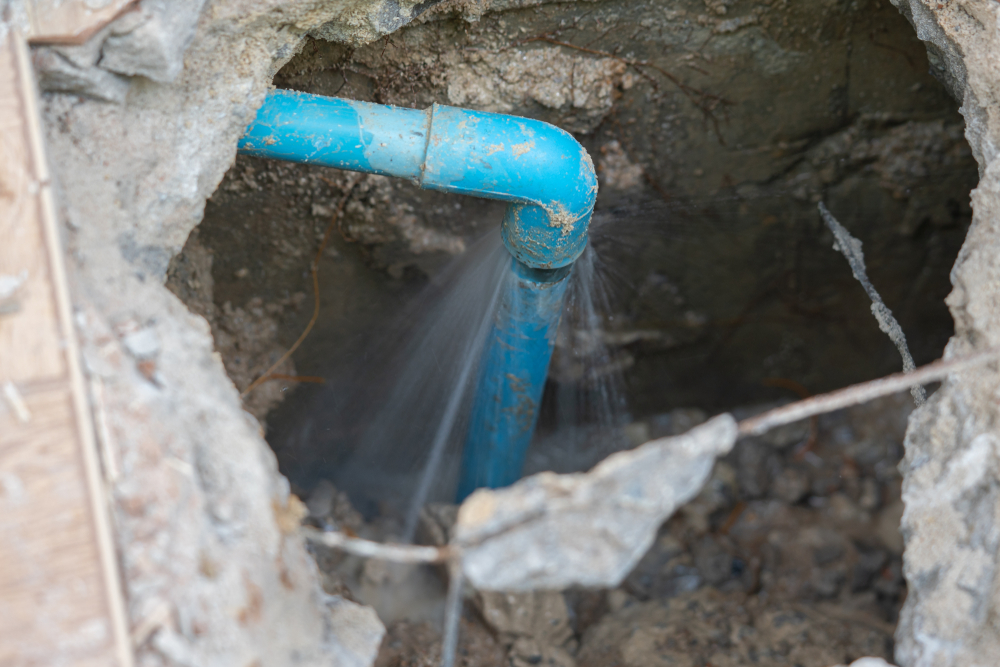How to Examine If Your House Has a Concealed Leak
How to Examine If Your House Has a Concealed Leak
Blog Article
We have stumbled upon this post about Leaking water lines directly below on the internet and thought it made sense to write about it with you on my blog.

Early discovery of leaking water lines can mitigate a possible catastrophe. Some small water leaks might not be visible.
1. Examine the Water Meter
Inspecting it is a proven method that aids you discover leaks. If it relocates, that indicates a fast-moving leak. This means you may have a slow leak that can also be below ground.
2. Check Water Consumption
Examine your water expenses as well as track your water intake. As the one paying it, you should discover if there are any discrepancies. If you spot sudden changes, despite your intake being the same, it means that you have leakages in your plumbing system. Remember, your water bill ought to fall under the very same array monthly. An unexpected spike in your bill shows a fast-moving leak.
A stable boost every month, also with the exact same behaviors, reveals you have a slow leak that's additionally slowly escalating. Call a plumber to completely check your home, particularly if you feel a warm location on your flooring with piping below.
3. Do a Food Coloring Examination
When it comes to water intake, 30% originates from commodes. Test to see if they are running correctly. Drop specks of food color in the tank and also wait 10 mins. If the shade somehow infiltrates your bowl during that time without flushing, there's a leakage in between the storage tank and dish.
4. Asses Outside Lines
Do not forget to check your exterior water lines too. Needs to water seep out of the link, you have a loosened rubber gasket. One small leakage can squander tons of water as well as surge your water bill.
5. Examine the situation as well as evaluate
Property owners must make it a habit to inspect under the sink counters and also inside cupboards for any kind of bad odor or mold growth. These 2 warnings indicate a leak so punctual focus is needed. Doing regular inspections, even bi-annually, can save you from a significant trouble.
Extra importantly, if you understand your house is currently old, maintain a watchful eye on your heaters, hose pipes, pipelines and so on. Look for stainings and also weakening as many devices and also pipelines have a life expectancy. They will certainly also naturally deteriorate due to tear as well as use. Do not wait for it to rise if you believe dripping water lines in your plumbing system. Call a specialist plumber right away so you don't wind up with a horrible mess in your house.
Early discovery of leaking water lines can reduce a potential disaster. Some little water leakages may not be visible. Examining it is a proven method that assists you discover leakages. One little leak can throw away heaps of water as well as surge your water bill.
If you believe dripping water lines in your plumbing system, don't wait for it to escalate.
WARNING SIGNS OF WATER LEAKAGE BEHIND THE WALL
PERSISTENT MUSTY ODORS
As water slowly drips from a leaky pipe inside the wall, flooring and sheetrock stay damp and develop an odor similar to wet cardboard. It generates a musty smell that can help you find hidden leaks.
MOLD IN UNUSUAL AREAS
Mold usually grows in wet areas like kitchens, baths and laundry rooms. If you spot the stuff on walls or baseboards in other rooms of the house, it’s a good indicator of undetected water leaks.
STAINS THAT GROW
When mold thrives around a leaky pipe, it sometimes takes hold on the inside surface of the affected wall. A growing stain on otherwise clean sheetrock is often your sign of a hidden plumbing problem.
PEELING OR BUBBLING WALLPAPER / PAINT
This clue is easy to miss in rooms that don’t get much use. When you see wallpaper separating along seams or paint bubbling or flaking off the wall, blame sheetrock that stays wet because of an undetected leak.
BUCKLED CEILINGS AND STAINED FLOORS
If ceilings or floors in bathrooms, kitchens or laundry areas develop structural problems, don’t rule out constant damp inside the walls. Wet sheetrock can affect adjacent framing, flooring and ceilings.
https://www.servicemasterbyzaba.com/blog/how-to-detect-water-leakage-in-walls/

As a keen person who reads about Leaking water lines, I imagined sharing that piece of content was worthwhile. Sharing is nice. You won't know, you could be helping someone out. Thank-you for taking the time to read it.
Report this page